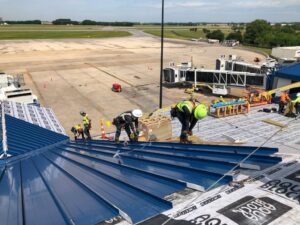Atlanta City Council Passes Ordinances to Regulate Data Centers
The Atlanta City Council has made a move to better manage the growth of data centers within the city limits. Two new ordinances were approved that aim to define and regulate data centers in the area.
The first ordinance introduces an official definition of what a “data center” is. According to the new law, these facilities are described as large warehouses filled with computer servers that store, manage, and transmit digital data. Data centers have become crucial to internet operations but have also raised concerns due to their size and noise.
The second ordinance places restrictions on where these data centers can be built. Under the new rules, construction of data centers is prohibited along the Beltline trail loop and within a half-mile of transit centers, such as MARTA and bus stops. These restrictions follow complaints from residents and city officials about the potential impact of data centers on certain city areas.
This action by the City Council comes in response to a boom in data center development in Atlanta, which has seen a 211% increase in growth since 2023. This is reportedly the fastest rate of growth in the country.
Community Concerns and Official Statements
Councilmember Jason Dozier, one of the sponsors of the ordinance, highlighted the importance of having proper regulations to ensure positive outcomes for the Atlanta community. Councilmember Matt Westmoreland, another sponsor, stated that the city’s commitment is to ensure balanced and sustainable growth that prioritizes residents’ well-being.
Impact on Existing Data Centers
It’s important to note that the new regulations will not affect the existing data centers in the city. However, these facilities might encounter restrictions if they attempt to expand in the future.
This development shows that Atlanta is taking proactive steps to manage its rapid growth and to address the concerns of its residents while supporting essential internet infrastructure. The aim is to find a balance that fosters technological advancement without compromising the quality of life for those who live in the city.
This story continues to develop as city officials and residents react to the new ordinances and their implementation.







